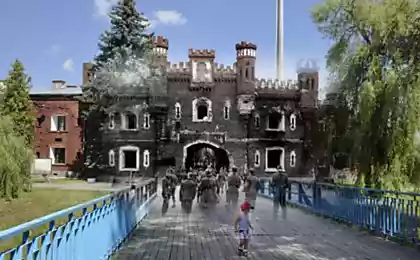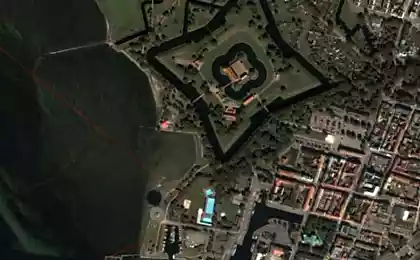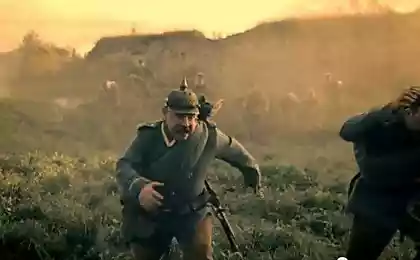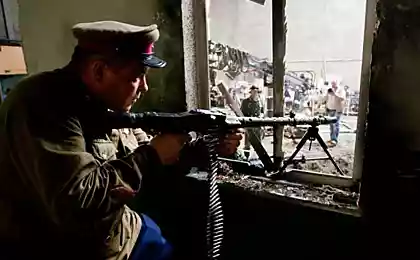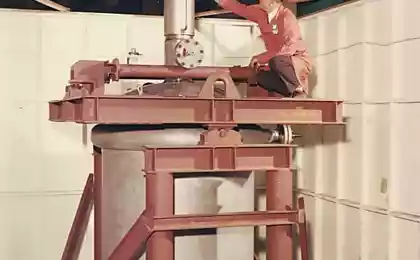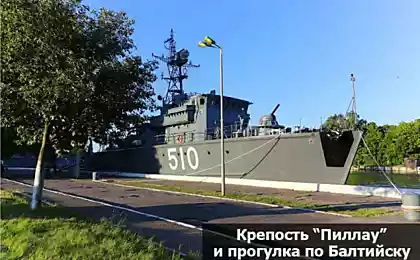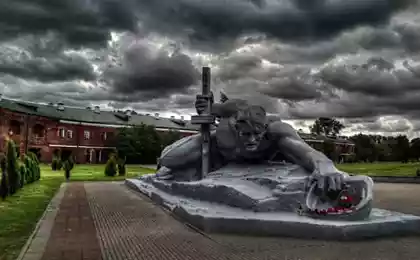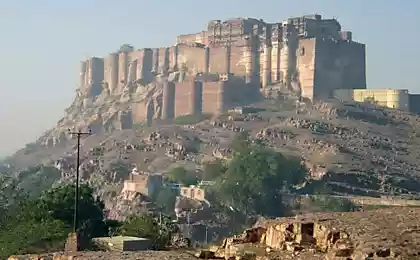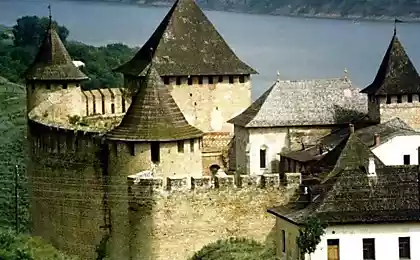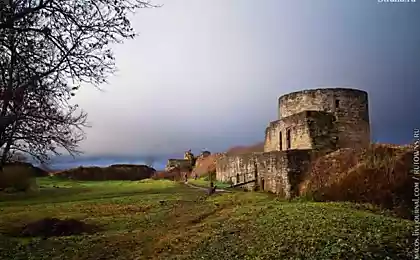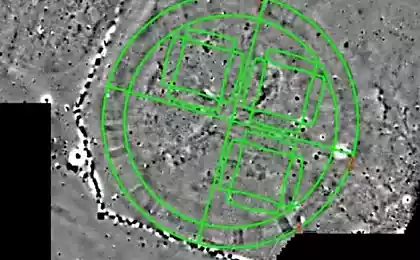807
Brest. Fortress (33 photos)
Europe and Ross in a good common ground could not find ever. Confirmation of this fact - the grandiose fortress which for centuries were built in the western regions of Russia. In the Middle Ages it was Ivangorod, Pskov and Smolensk, as well as the "stone belt" of the Novgorod Republic. In the era of modern times these were the forts of St. Petersburg, as well as three buildings in the middle of the 19th century super-fortress in Belarus: Bobruisk, Grodno and Brest. The first two now abandoned and interesting except that the diggers. The second fort was lucky to witness the first great Russian disgrace - Brest-Litovsk, and then become a symbol of the heroism of the Great Patriotic War. And then, and until now this fort stood on the western border of the Russian (not "Russian"!) Of the world, but at first it was a shield, who took the first blow, and now - rather, the order of the hero, hanging on the front gate.
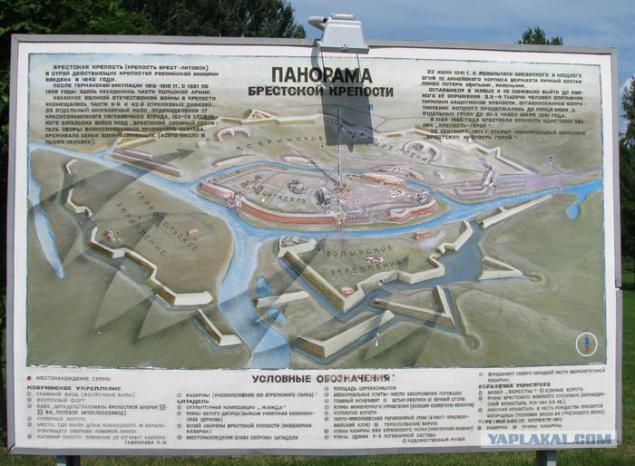
Fortress is traditionally considered to be the main attraction of Belarus - at least in its popularity, it clogs and Pinsk, and Polotsk and Grodno, not to mention the Minsk whose unique heritage "ideologically wrong" - ie Stalin. In Soviet times, a tour of the fortress drove rail passengers, as the train was 2:00 at the depot at the turn of the wheels. And now, in any place in Belarus do not see so many tourists at the same time. Not only Belarusians - there are Russian, Ukrainians, Poles, Germans and even Japanese.
"Bayonet" Brest Fortress is clearly visible from the pedestrian bridge at Brest.
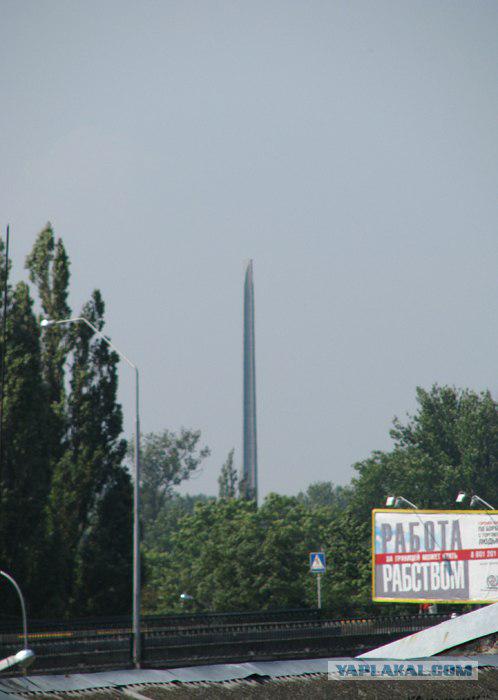
To go there on foot - about 30-40 minutes, but the bus goes to the castle and wait for it rare, you may have even longer. Going necessary to Lenin Street (which becomes a road bridge at the station), turn onto the street Levanevskogo (it you will learn in Polish cottages 20s), go right through the park, turn right behind the park, cross the bridge and then left on the street Zubachov. The fortress stands at the border, and as you get closer to it more and more feel in the air that something irrational, growing some vague anxiety.
With wide boulevards seen the main entrance to the fortress:
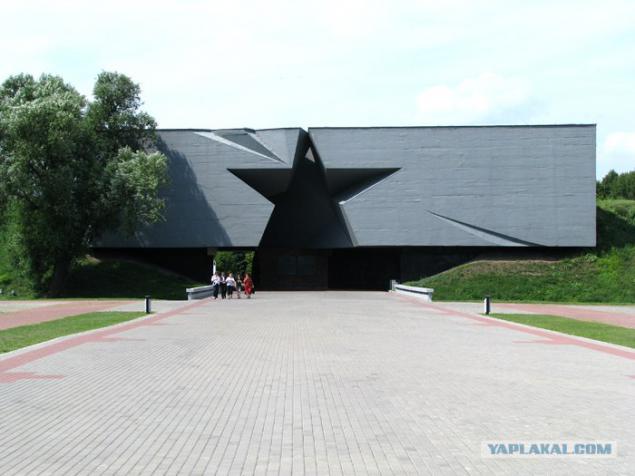
The fortress was built in the years 1833-42. Later, rebuilt in 1918, it was left in disgrace, and during Polish rule it housed a prison for political opposition (yes, yes, in a civilized European culture prosperous humane humane clean and sweet heart of Poland !!!). In 1939 he was captured by the Red Army, and in 1941 Brest took the first blow of the Wehrmacht (not including air raids on Sevastopol). Infrastructure fortress was destroyed by the shelling, but the Germans did not manage to take it by storm - the garrison had a desperate resistance. People knew that they would not survive, and still held the fortress more than a month. In Soviet times there was a legend that when the last soldier, already mortally wounded, came out of the fortress, the Germans not only stryalili him, but allegedly took off their helmets - though the soldiers died after a few steps.
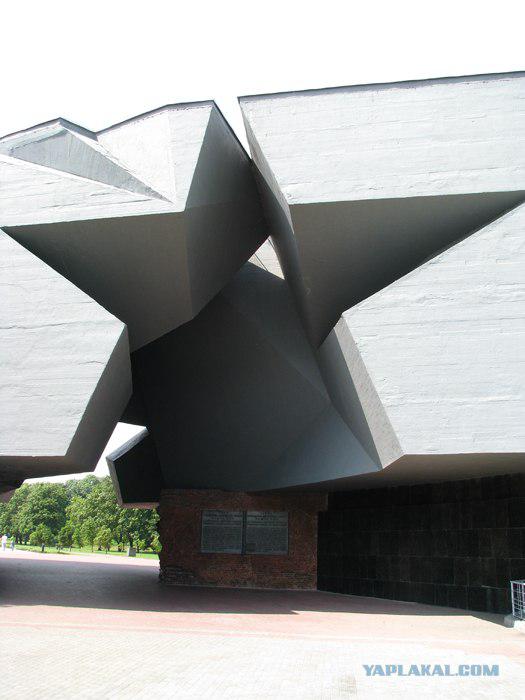
Current Brest Fortress - the first memorial like Mamayev Kurgan and Poklonnaya Hill. I would say that the last two it is slightly inferior, but the impression of a fortress is still the strongest. And besides, well preserved and fortified building complex itself is also of considerable interest.
Entrance through the tunnel-star. There is constantly a metronome clicks, and now and then transferred radiobraschenie "Moscow speaking ...", followed by playing "Arise, great country!". Still, a brilliant song, whatever may be said about it now.
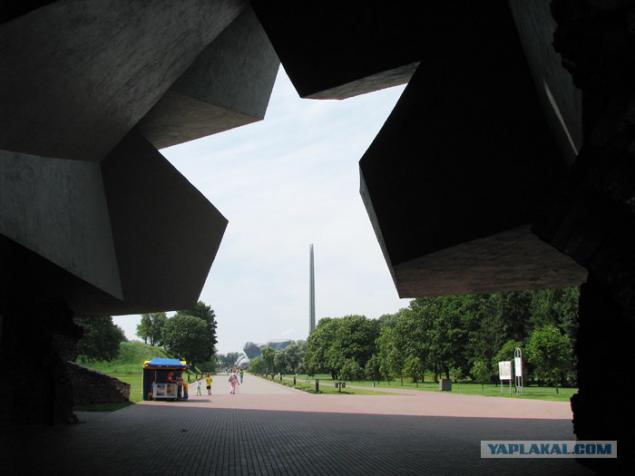
The fortress was surrounded by a moat of Citadel, standing at the confluence of the Bug Mukhavets, which is adjacent to three fortifications. Entrance to the castle from the east through Kobirnskoe strengthening. It was one of the centers of resistance, but the remains of shafts:
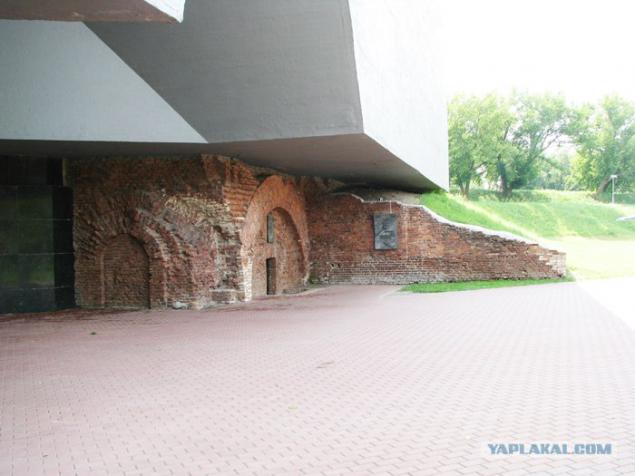
...
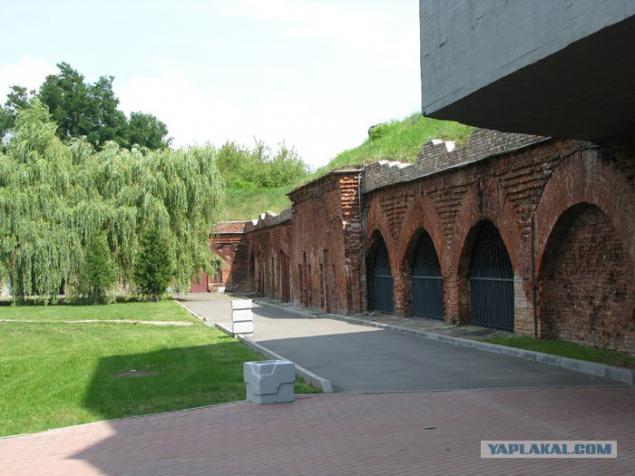
Having occupied Brest in the dungeons Kobirnskih Nazis carried out executions. Polesie was famous pre-war Jewish diaspora - in Pinsk, David-Gorodok Jews made up 70% of the population. Almost all of them were destroyed (just please, do not need to get out right now with anti-Semitic slogans - it is not interesting).
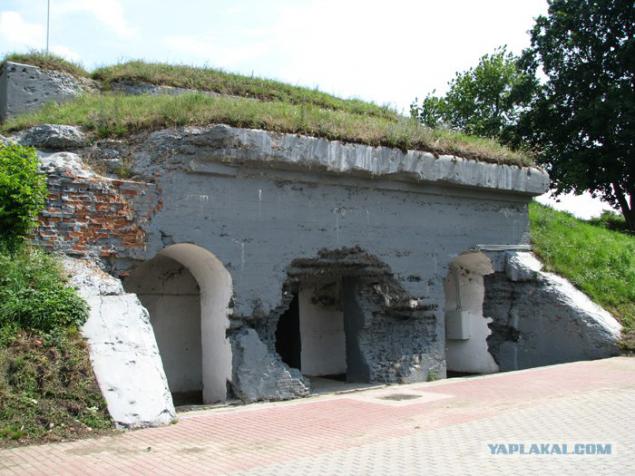
...
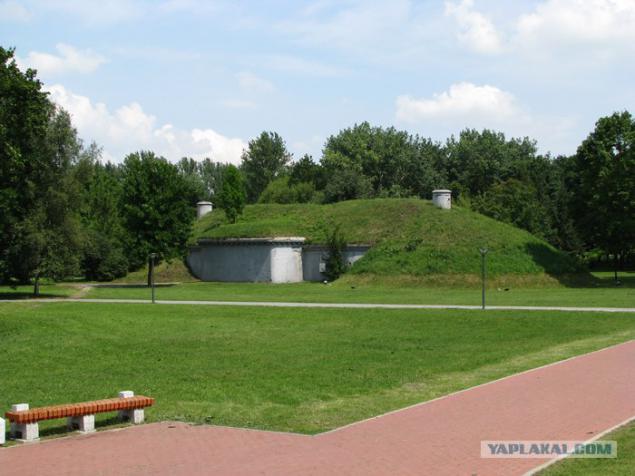
...
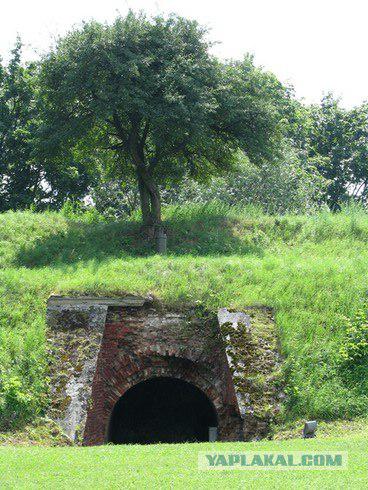
On the outskirts of the Citadel is also a cafe "Citadel". Initially, these were barracks, then organized a garrison here hlebzavod. Now there you can eat cheaply as anywhere in Belarus, and a little bit tastier than conventional Belarusian eateries.

Tstadel is surrounded on two sides by a moat, with two other exits to the Bug and Mukhavets. That is, you can get there only by a bridge. The Citadel is constantly a lot of weddings, and their view contrasts sharply with the gloomy solemn memorial.
For example, next to the bridge is a sculpture "Thirst" (because the land was destroyed by water during the night June 22).
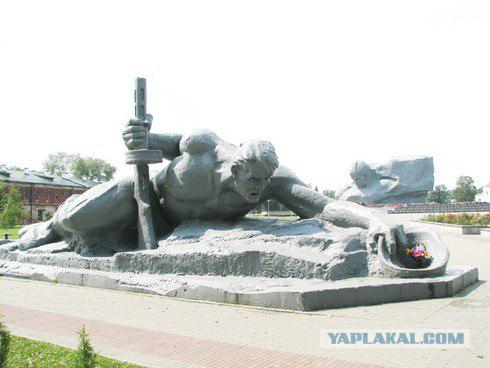
The strongest impression - the face of a soldier:
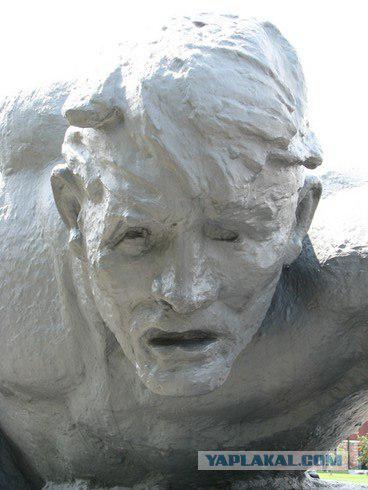
Citadel in terms of a perfect circle. On the edges were once barracks with a total length of nearly 2 kilometers. Today, the barracks were only on one side. On the other - are stylized museum building:
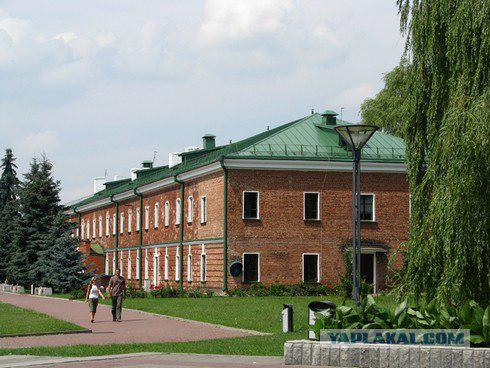
And the ruins of the White Palace. Before the construction of the fortress it was a Basilian monastery, after officers began meeting. Symbolically, the Brest-Litovsk was signed in this building.
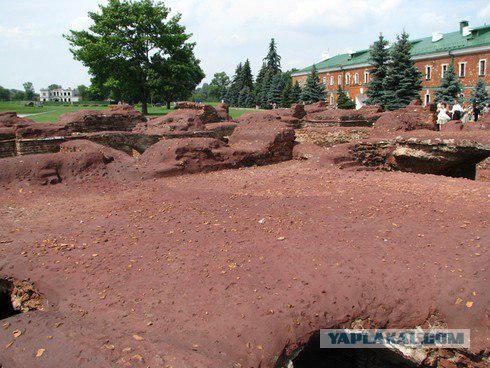
In the ruins:
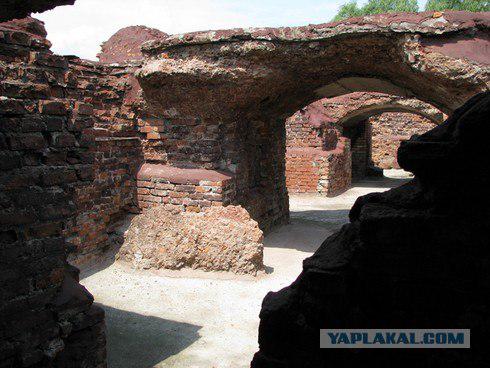
...
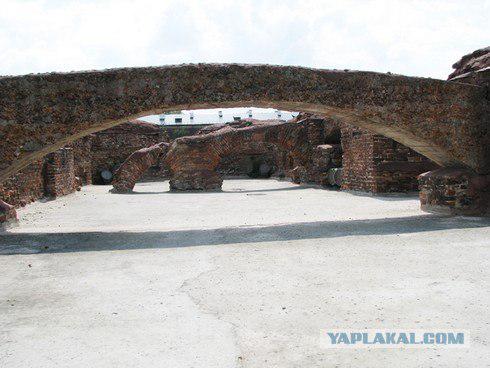
In the center of the Citadel - the main composition of the memorial sculpture "Courage." The size is comparable to the same fragment of the Volgograd Motherland.

In the center of the Citadel - the main composition of the memorial sculpture "Courage." The size is comparable to the same fragment of the Volgograd Motherland.

Worked out great person:
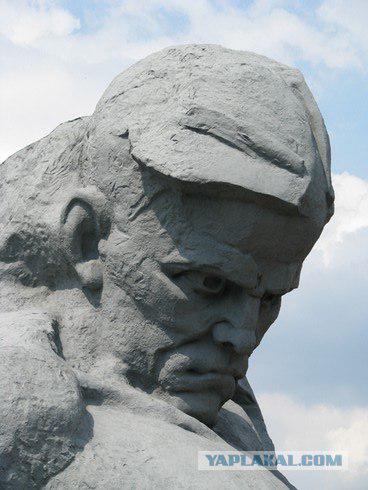
Probably, it is the largest sculpture, a bust in the world. At the bottom - a memorial to the Eternal Flame:
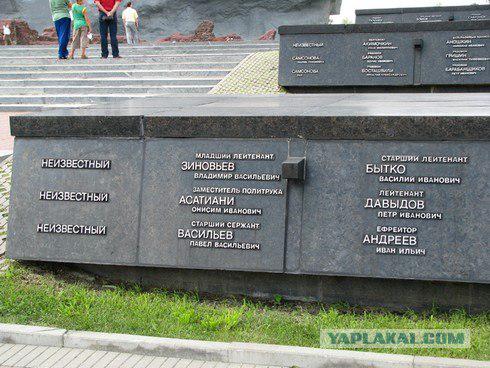
On the back side - reliefs:
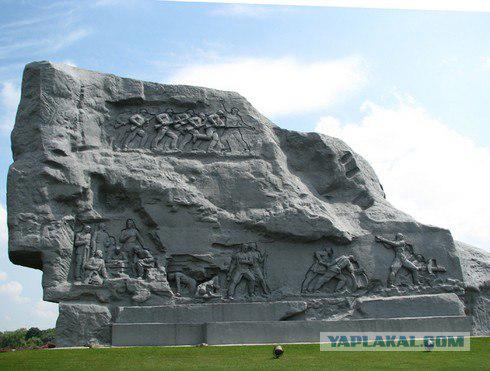
Near the towers visible from all parts of the Brest Bayonet: steering metal obelisk in height of 100 meters:
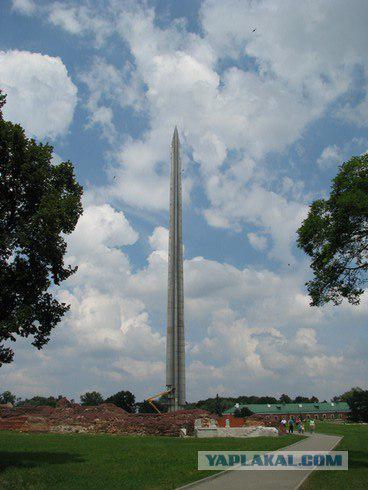
During the memorial - Branch St. Nicholas Cathedral (1852). In vain it so zarestovrirovali:

...
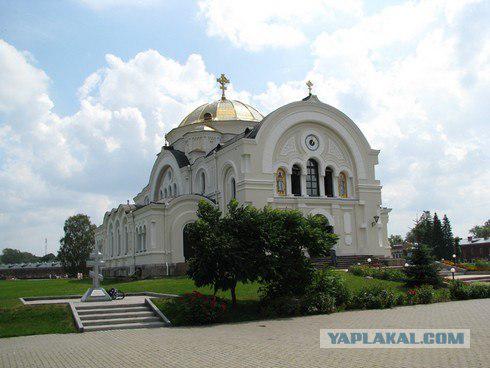
But inside restavrorty has not worked, and the Cathedral of the 19th century vividly recalls its decoration some early Christian basilica in Rome or Constantinople.
Finally, the most preserved part of the actual Brest Fortress - a complex of barracks, stretching for a kilometer along the banks of the Bug and Mukhavets:

...
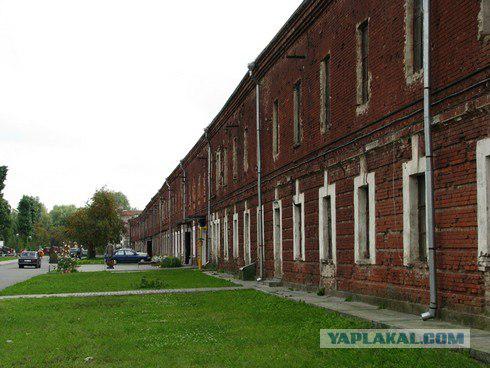
...
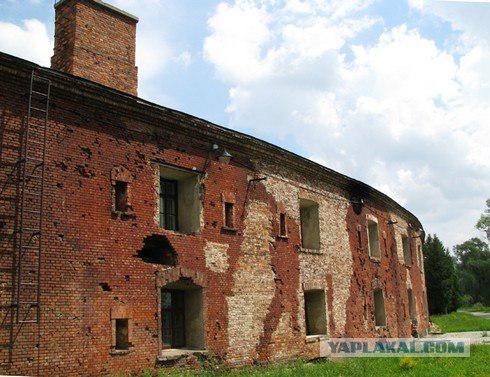
...
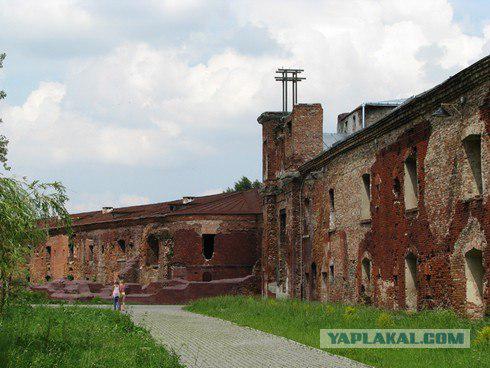
...
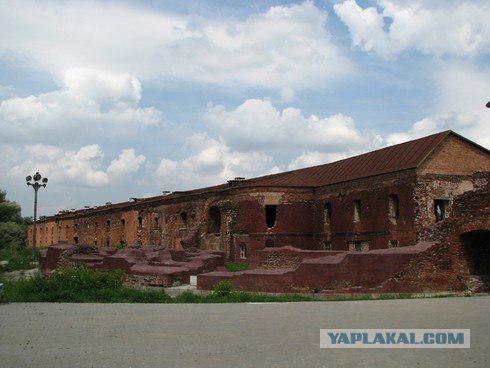
In the dungeons of the barracks, too, was fighting. Earlier on strengthening side were three gates. For Terespolsky Worth was the strengthening of the same name:
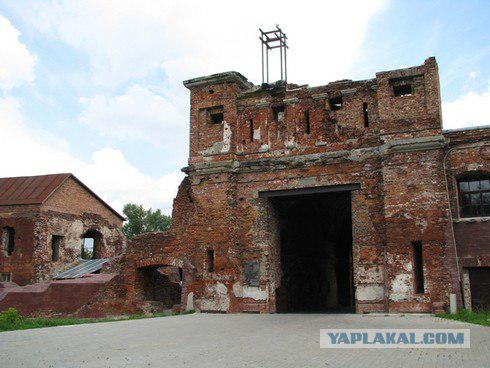
Which are located beyond the Bug River. But like the Bug - a state border. It is on the bank of the European Union have? It is unlikely ...
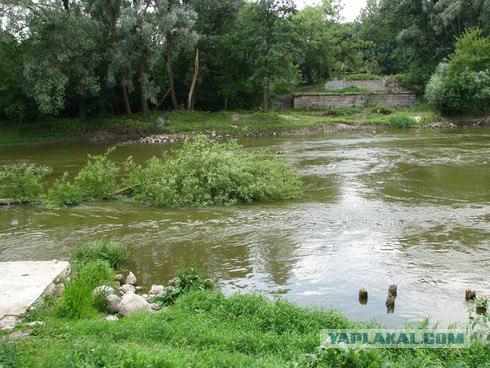
But Kholm Gate leading to Volyn ukreleniyu where the unique archaeological museum "Berestye" but this - next time ...
via community.livejournal.com/russiantowns
the style of the author stored

Source:

Fortress is traditionally considered to be the main attraction of Belarus - at least in its popularity, it clogs and Pinsk, and Polotsk and Grodno, not to mention the Minsk whose unique heritage "ideologically wrong" - ie Stalin. In Soviet times, a tour of the fortress drove rail passengers, as the train was 2:00 at the depot at the turn of the wheels. And now, in any place in Belarus do not see so many tourists at the same time. Not only Belarusians - there are Russian, Ukrainians, Poles, Germans and even Japanese.
"Bayonet" Brest Fortress is clearly visible from the pedestrian bridge at Brest.

To go there on foot - about 30-40 minutes, but the bus goes to the castle and wait for it rare, you may have even longer. Going necessary to Lenin Street (which becomes a road bridge at the station), turn onto the street Levanevskogo (it you will learn in Polish cottages 20s), go right through the park, turn right behind the park, cross the bridge and then left on the street Zubachov. The fortress stands at the border, and as you get closer to it more and more feel in the air that something irrational, growing some vague anxiety.
With wide boulevards seen the main entrance to the fortress:

The fortress was built in the years 1833-42. Later, rebuilt in 1918, it was left in disgrace, and during Polish rule it housed a prison for political opposition (yes, yes, in a civilized European culture prosperous humane humane clean and sweet heart of Poland !!!). In 1939 he was captured by the Red Army, and in 1941 Brest took the first blow of the Wehrmacht (not including air raids on Sevastopol). Infrastructure fortress was destroyed by the shelling, but the Germans did not manage to take it by storm - the garrison had a desperate resistance. People knew that they would not survive, and still held the fortress more than a month. In Soviet times there was a legend that when the last soldier, already mortally wounded, came out of the fortress, the Germans not only stryalili him, but allegedly took off their helmets - though the soldiers died after a few steps.

Current Brest Fortress - the first memorial like Mamayev Kurgan and Poklonnaya Hill. I would say that the last two it is slightly inferior, but the impression of a fortress is still the strongest. And besides, well preserved and fortified building complex itself is also of considerable interest.
Entrance through the tunnel-star. There is constantly a metronome clicks, and now and then transferred radiobraschenie "Moscow speaking ...", followed by playing "Arise, great country!". Still, a brilliant song, whatever may be said about it now.

The fortress was surrounded by a moat of Citadel, standing at the confluence of the Bug Mukhavets, which is adjacent to three fortifications. Entrance to the castle from the east through Kobirnskoe strengthening. It was one of the centers of resistance, but the remains of shafts:

...

Having occupied Brest in the dungeons Kobirnskih Nazis carried out executions. Polesie was famous pre-war Jewish diaspora - in Pinsk, David-Gorodok Jews made up 70% of the population. Almost all of them were destroyed (just please, do not need to get out right now with anti-Semitic slogans - it is not interesting).

...

...

On the outskirts of the Citadel is also a cafe "Citadel". Initially, these were barracks, then organized a garrison here hlebzavod. Now there you can eat cheaply as anywhere in Belarus, and a little bit tastier than conventional Belarusian eateries.

Tstadel is surrounded on two sides by a moat, with two other exits to the Bug and Mukhavets. That is, you can get there only by a bridge. The Citadel is constantly a lot of weddings, and their view contrasts sharply with the gloomy solemn memorial.
For example, next to the bridge is a sculpture "Thirst" (because the land was destroyed by water during the night June 22).

The strongest impression - the face of a soldier:

Citadel in terms of a perfect circle. On the edges were once barracks with a total length of nearly 2 kilometers. Today, the barracks were only on one side. On the other - are stylized museum building:

And the ruins of the White Palace. Before the construction of the fortress it was a Basilian monastery, after officers began meeting. Symbolically, the Brest-Litovsk was signed in this building.

In the ruins:

...

In the center of the Citadel - the main composition of the memorial sculpture "Courage." The size is comparable to the same fragment of the Volgograd Motherland.

In the center of the Citadel - the main composition of the memorial sculpture "Courage." The size is comparable to the same fragment of the Volgograd Motherland.

Worked out great person:

Probably, it is the largest sculpture, a bust in the world. At the bottom - a memorial to the Eternal Flame:

On the back side - reliefs:

Near the towers visible from all parts of the Brest Bayonet: steering metal obelisk in height of 100 meters:

During the memorial - Branch St. Nicholas Cathedral (1852). In vain it so zarestovrirovali:

...

But inside restavrorty has not worked, and the Cathedral of the 19th century vividly recalls its decoration some early Christian basilica in Rome or Constantinople.
Finally, the most preserved part of the actual Brest Fortress - a complex of barracks, stretching for a kilometer along the banks of the Bug and Mukhavets:

...

...

...

...

In the dungeons of the barracks, too, was fighting. Earlier on strengthening side were three gates. For Terespolsky Worth was the strengthening of the same name:

Which are located beyond the Bug River. But like the Bug - a state border. It is on the bank of the European Union have? It is unlikely ...

But Kholm Gate leading to Volyn ukreleniyu where the unique archaeological museum "Berestye" but this - next time ...
via community.livejournal.com/russiantowns
the style of the author stored

Source:

